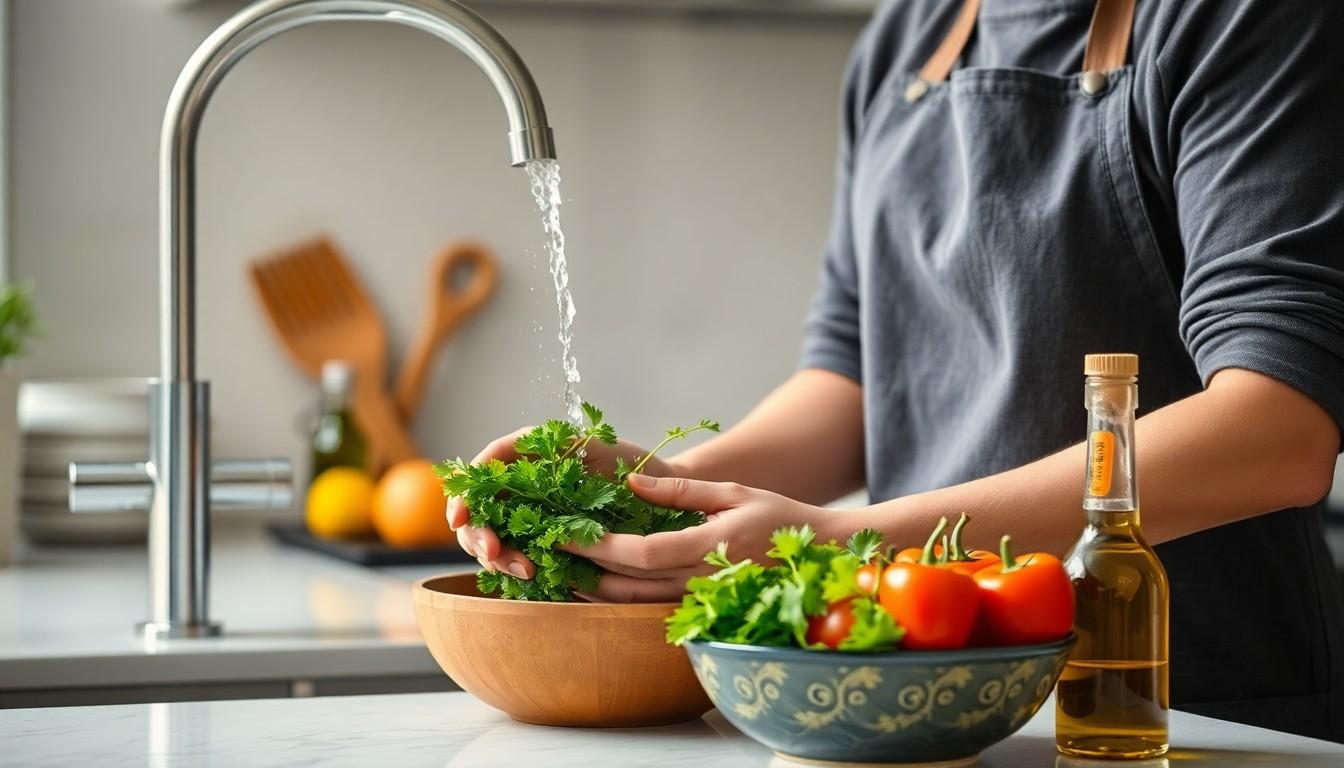Cooking dotarizo can feel like trying to solve a Rubik’s Cube blindfolded—daunting but oh-so-rewarding once you crack the code. This beloved dish, often celebrated for its rich flavors and unique texture, deserves a spot in every kitchen. Whether you’re a seasoned chef or a kitchen rookie, mastering dotarizo is within reach.
Tips To Cook Dotarizo
Dotarizo relies on a blend of fresh and dried ingredients to create its signature depth of flavor. Selecting quality components can elevate the overall dish significantly.
Fresh vs. Dried Ingredients
Fresh ingredients enhance the dish’s flavor profile. Fresh herbs like cilantro and parsley brighten the taste, while vegetables add texture. On the other hand, dried ingredients provide concentrated flavors. Dried chilies, for example, infuse spiciness and warmth. Both types serve distinct roles; using a combination ensures a robust and balanced dish. Chefs often prefer fresh ingredients for garnishing, while dried ones bring heartiness to the base.
Choosing the Right Spices
Choosing spices critically impacts dotarizo’s final flavor. Cumin and coriander are popular choices, each adding earthy tones. Paprika contributes a subtle sweetness and vibrant color. It’s essential to consider freshness; old spices lose potency and diminish the dish’s quality. Customizing spice levels according to taste preferences results in a more personalized experience. Experimenting with different spice blends can lead to unique interpretations of traditional dotarizo.
Preparation Techniques

Preparation techniques play a critical role in cooking dotarizo. Mastering these methods sets the foundation for creating this flavorful dish.
Cleaning and Handling Ingredients
Cleaning ingredients properly is essential for safety and flavor. Fresh herbs like cilantro and parsley require rinsing under cold water to remove dirt and debris. Removing any damaged or wilted leaves ensures the dish maintains its vibrant taste. Drying herbs with a clean towel or using a salad spinner prevents excess moisture from affecting cooking. For dried ingredients, checking for freshness helps avoid any off flavors. Store them in airtight containers to preserve potency. Handling the ingredients with care enhances their natural flavors, contributing to the overall success of dotarizo.
Marinating Tips
Marinating can significantly boost the flavors in dotarizo. A flavorful marinade combines ingredients such as olive oil, garlic, citrus juice, and spices. Marinate the protein for at least one hour, though longer marinating times can enhance flavor absorption even more. Using a resealable bag facilitates even coating and ensures the marinade clings to the protein. Turn the bag occasionally to distribute the marinade evenly. After marinating, it’s vital to discard the leftover marinade to avoid contamination. This simple step elevates the dish and brings out the best in every ingredient.
Cooking Methods
Cooking dotarizo employs various methods that highlight its rich flavors. Each technique contributes uniquely to the dish’s profile.
Traditional Cooking Approaches
Traditional methods often involve slow-cooking. This technique allows flavors to meld beautifully, creating a harmonious dish. Using a stovetop or open flame, cooks can achieve that authentic taste. Braising is also popular, as it tenderizes proteins and infuses them with spices. Stewing ingredients together enhances the depth of flavor significantly. Furthermore, cooking in a clay pot retains moisture and adds a subtle earthiness. This approach emphasizes respect for the ingredients, celebrating their natural qualities.
Modern Variations
Modern variations of dotarizo often incorporate contemporary cooking appliances. Pressure cookers offer a quick alternative, reducing cooking time while preserving taste. Air frying adds a healthier twist, providing crispy textures without excess oil. Some chefs even experiment with sous vide techniques, ensuring precise temperatures for proteins. These variations introduce innovative flavors and textures, attracting new audiences to the dish. Creative garnishes, such as avocado or pomegranate seeds, further modernize presentations. Blending traditional and modern methods allows for personal interpretations of dotarizo.
Serving Suggestions
Dotarizo shines when paired with the right accompaniments, enhancing its rich flavors and unique texture. Achieving harmony between flavors elevates the experience.
Pairing with Sides
Complement dotarizo with light, refreshing sides that balance its depth. Couscous or fluffy rice works well, providing a neutral base. Grilled vegetables, such as zucchini or bell peppers, add a smoky touch. Consider a tangy salad for acidity; mixed greens with a lemon vinaigrette refresh the palate. Artisan bread serves as an excellent vehicle for savoring extra sauce, inviting diners to enjoy every drop.
Presentation Ideas
Serve dotarizo in a rustic dish for an authentic feel. Garnishing with fresh herbs like cilantro or parsley adds a vibrant touch. Consider placing slices of avocado or lime wedges alongside the dish, enhancing visual appeal. Presenting the meal with colorful accompaniments creates an inviting table. Using traditional pottery elevates the overall dining experience, inviting guests to savor the connection to its cultural roots.
Mastering dotarizo is a journey that anyone can embark on. With the right ingredients and techniques anyone can create a dish that’s not only flavorful but also deeply satisfying. Embracing both traditional and modern cooking methods opens up a world of possibilities for personalization and innovation.
By experimenting with spices and presentation styles he or she can elevate dotarizo from a simple meal to a culinary experience. Whether serving it for a family dinner or a special occasion dotarizo has the potential to impress and delight. This cherished dish deserves a place in every kitchen inviting cooks to explore its rich cultural heritage and flavors.

